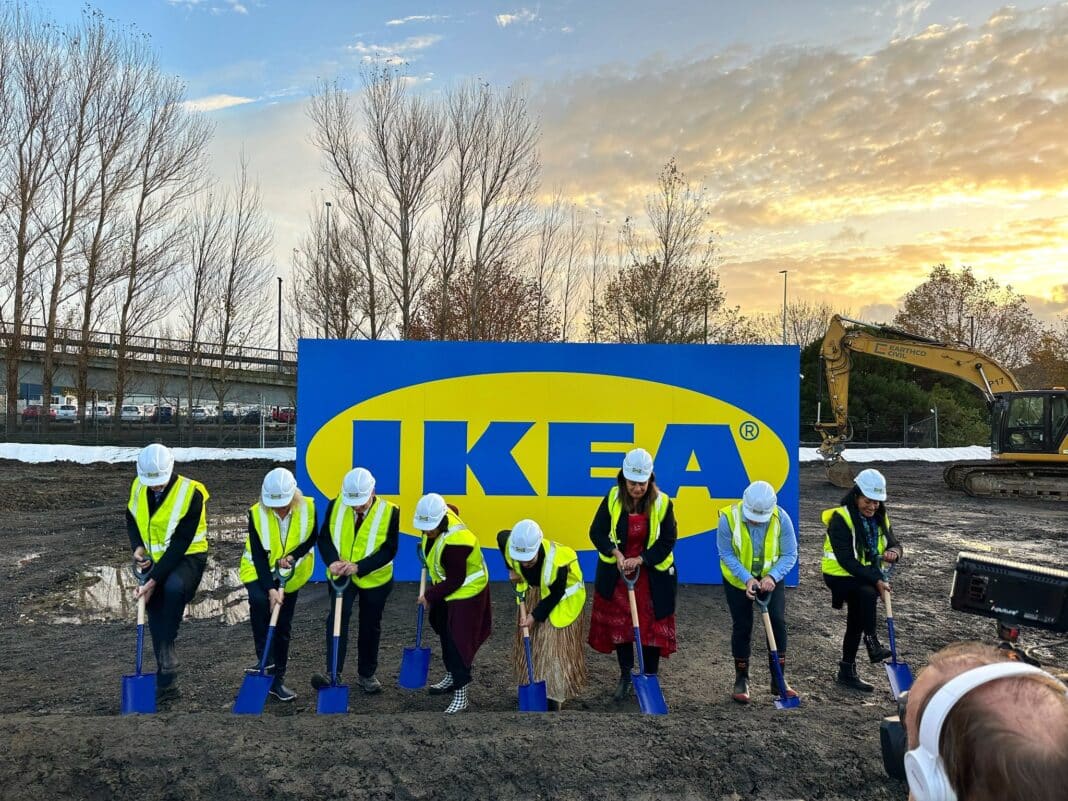Work on New Zealand’s first IKEA “Blue Box” is running on schedule, with the world’s largest furniture retailer studying more than 1,000 homeowners, ensuring the store is tailor-made for the NZ market.
That is according to Fabian Winterbine, IKEA’s expansion manager for Australasia and New Zealand, who revealed the decision-making process driving product selection at the new 34,000 square metre flagship store.
“In New Zealand and specifically Auckland, we do several home visits to see how people live, their living situation, their needs, and what sort of solutions would suit them,” according to Mr Winterbine, who spoke to the NZ Herald during a recent visit from Australia.
“And so what you see, what will be unique about the store in New Zealand is how we present the range, that it will be tailored to the New Zealand consumer so that it will be unique about New Zealand and this store in Auckland.”
IKEA is the world’s third-largest timber consumer by volume. In 2019, it procured more than 21 million cubic metres of timber for furniture products – enough to encircle the earth seven times!
Whilst IKEA’s “Big Box” stores have been a regular fixture in Australia for 50 years, the new 3-storey Sylvia Park is the first in New Zealand, joining a global portfolio comprising 400-plus stores in 60 countries.
Understanding how Kiwis live, not only in terms of the size of homes but also planned bedroom sizes and kitchens, plays a crucial role.
Slated for a mid to late 2025 opening, the new store is being developed by Kiwi Property Group and constructed by Naylor Love, with Mr Winterbine excitedly confirming that “it’s all happening.”
Meeting Australian (rather than NZ) Standards, the building design has successfully achieved a 5-Star Green Star rating for design, and once constructed, it should meet the eco requirements for NZ “Best Practice.”
“We’re six to seven months from groundbreaking, so we’re pleased about progress with the new store,” Mr Winterbine said.
Speaking to the NZ Herald overnight, he confirmed that cranes will start installing the first of our steel columns next month to support the building structure and exterior walls.
From that point, exterior building walls will also rise, as will the insulated sandwich panel that came complete with the eye-catching blue cladding and the hugely distinctive IKEA colourway, with the floor made of concrete on steel.
He said, “Most stores are made like this, with 500 or more pills already sunk into the ground to provide the building footings.
Soon, “three tower cranes will also be brought to the site to lift heavy equipment into place,” the design will also meet the requirements to survive earthquake activity.
“All deep civil drainage and horizontal foundations are now completed, along with the design for the store,” Mr Winterbine said before adding that the IKEA executives will visit the construction site later this year to view progress.
IKEA’s push into the New Zealand market comes as the furniture giant pivots from Europe and instead focuses on the North American, Asian and Oceanic markets.
In October, Wood Central reported that the company is investing billions into improving the consumer “retail experience” in new and existing physical stores.
The focus on physical stores comes as KIEA works toward becoming climate-positive by 2030 – with the retailer looking to increase solar and geothermal technology in locations when possible, transition to electric vehicle trucks and reduce waste.






